https://ift.tt/Ei53ILU Coffee Data Science Definitive Proof of the Theory For 30 years, the theory of fines migration has been generally...
Coffee Data Science
Definitive Proof of the Theory
For 30 years, the theory of fines migration has been generally accepted as truth in the espresso community. The theory is that finer particles migrate during an espresso shot, and this migration has an impact on extraction.
Previously, I have provided a few experiments where I didn’t find evidence of fines migration, but I still felt compelled to check my experiments to make sure they were not wrong. In particular, academic research into the topic of fines migration in porous mediums showed fines do migrate, and I designed a better experiment related to their work.
Experimental Results
Previously, I took a spent puck, and I cut it into three parts: bottom, middle, top, and in that shot, it seemed fines migrated but only a little.
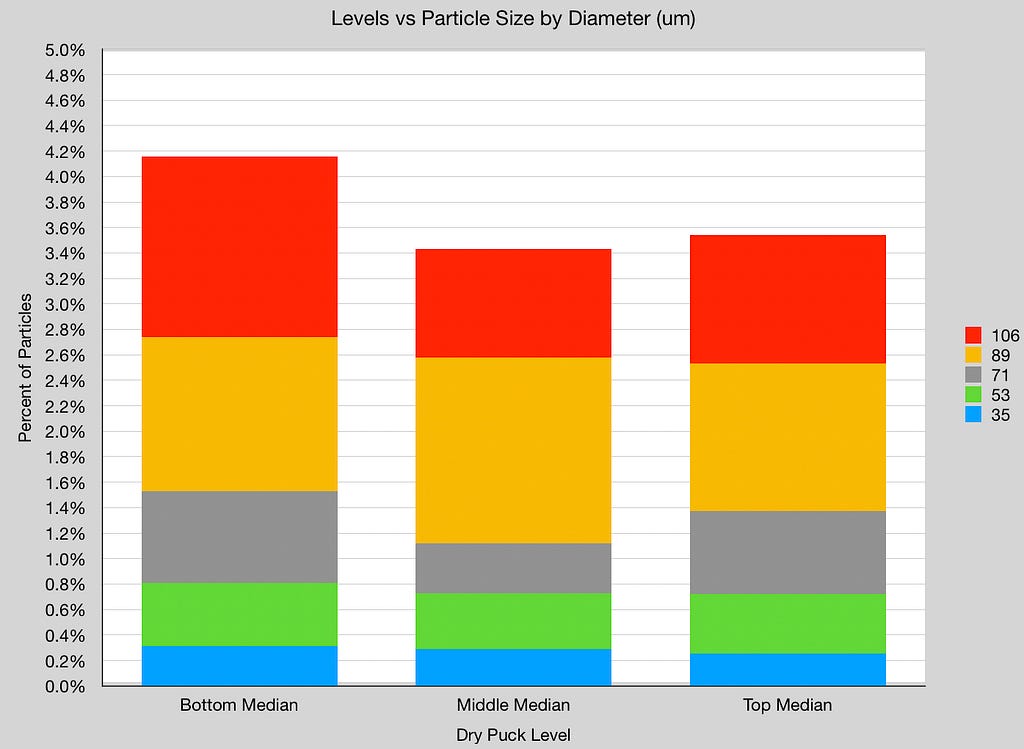
I pulled a shot more in accordance with literature, and the results were starkly different.
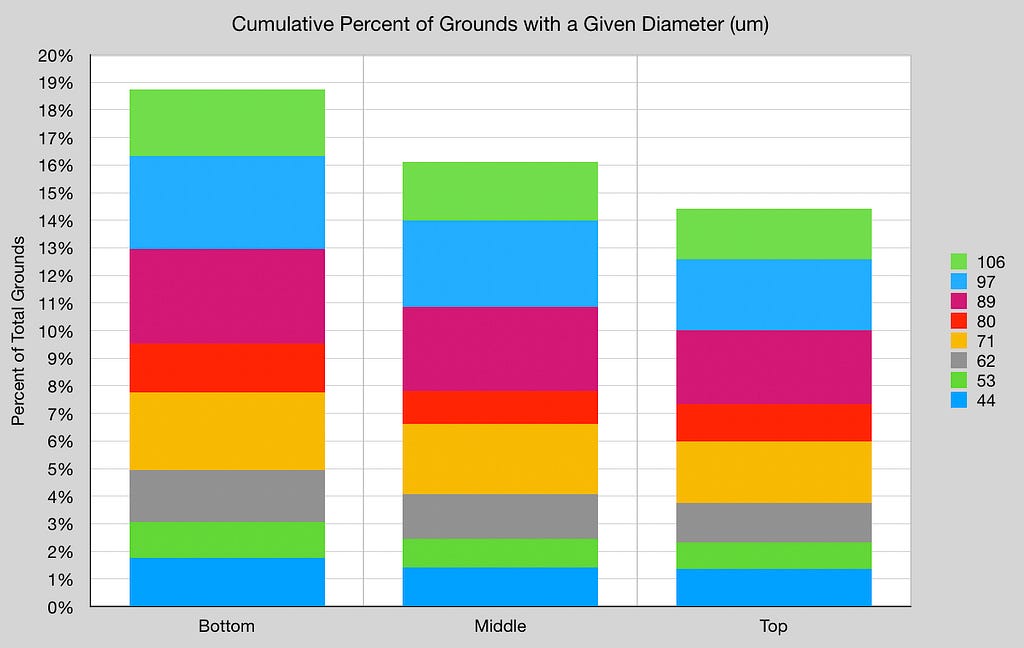
Fines migration was clear at every size of particle. I broke this down into another bar chart to double-check.
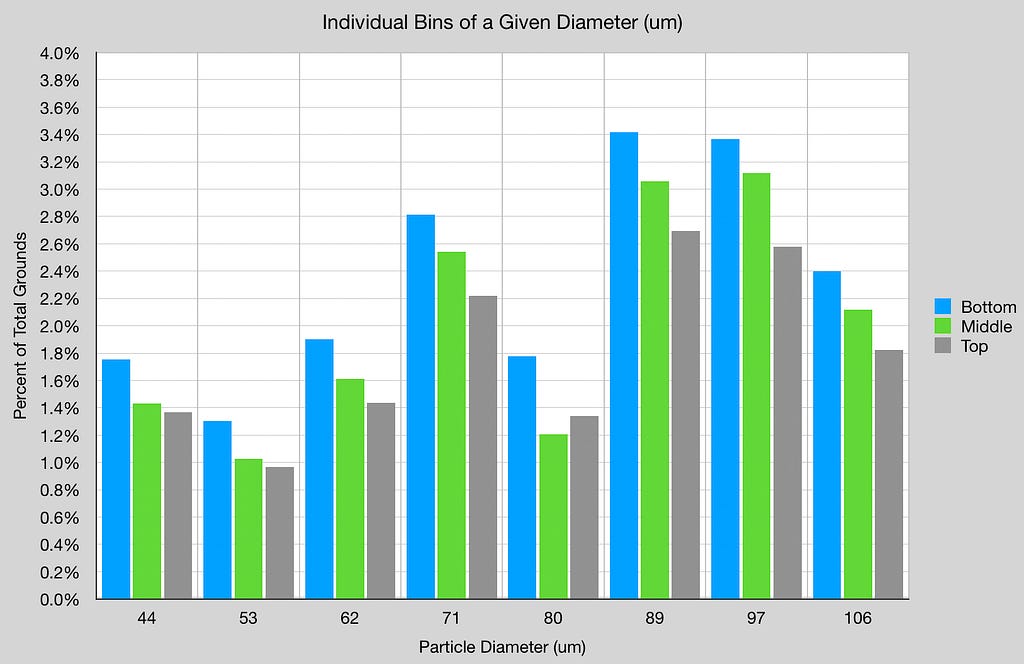
The evidence is conclusive, and I was able to do with an image based particle analysis. Here are the full distributions:
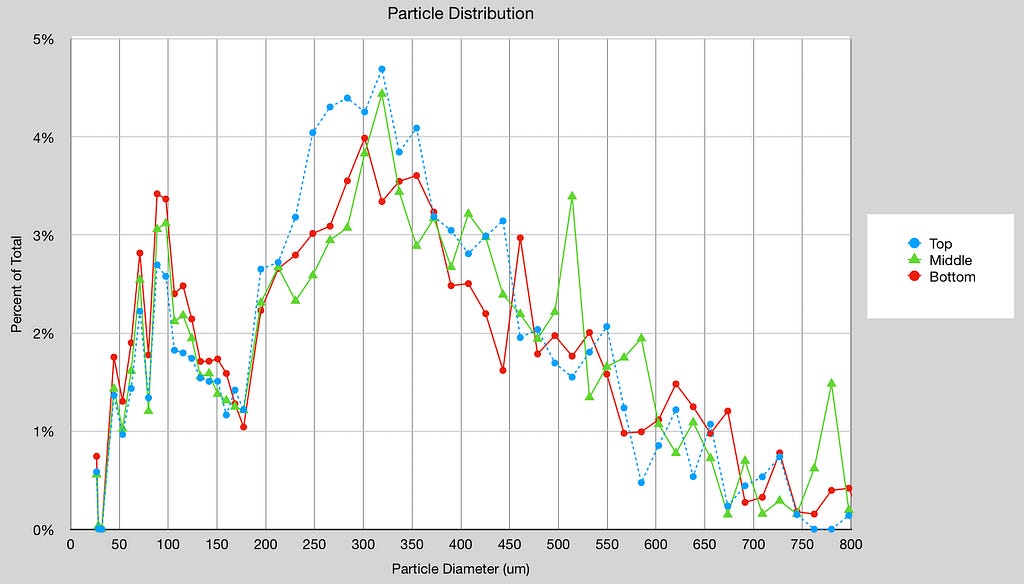
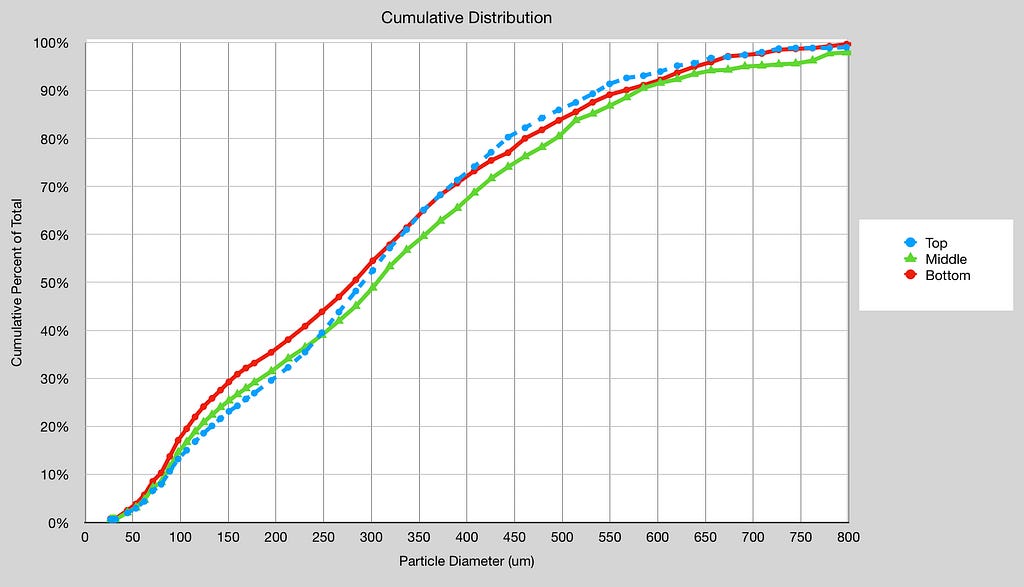
Experimental Design
My original experiment used a 3 to 1 output to input espresso shot ratio. Literature suggests that significant fines migration in soil happens at a ratio of 400 to 1 in terms of the volume of water (called PVI) pushed through relative to the volume of soil (research paper).
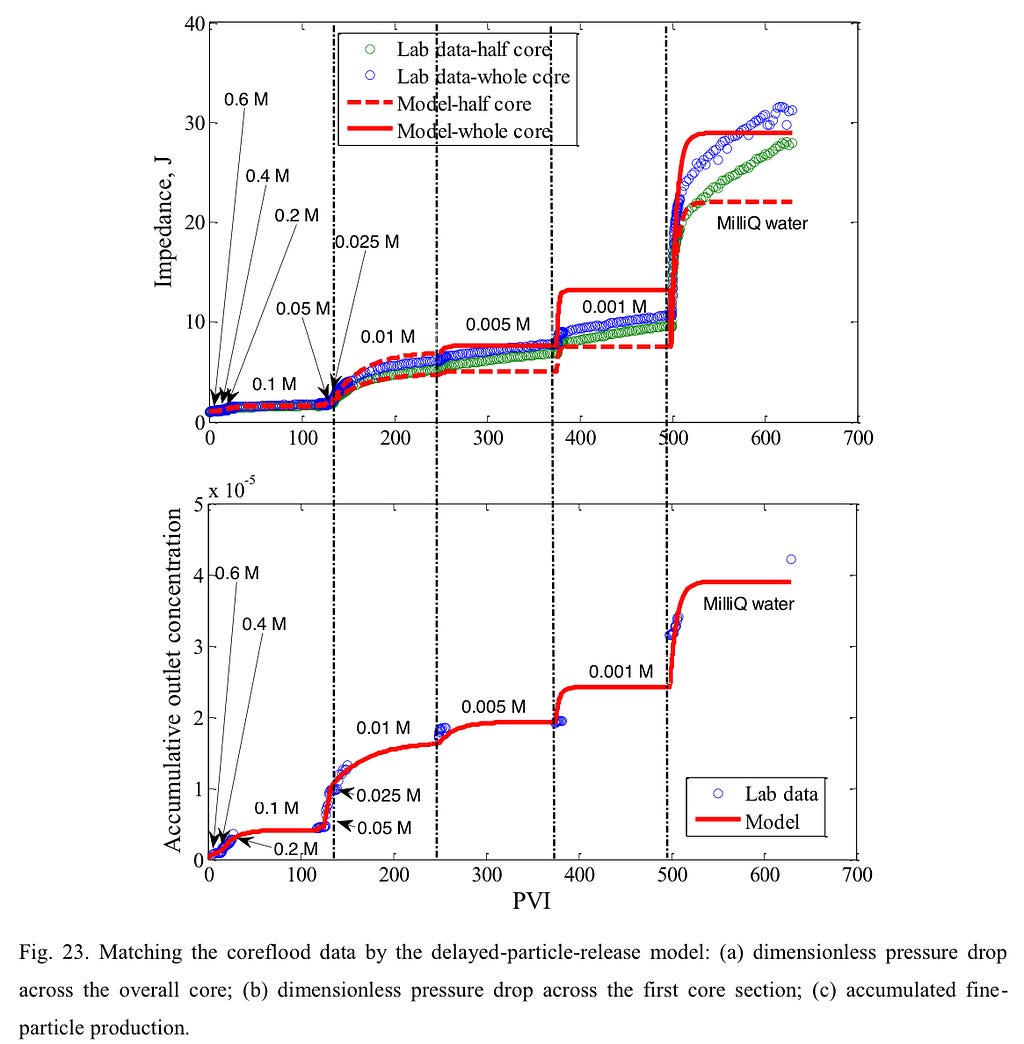
The author had several journal papers, and based on their titles, one might suspect fines don’t migrate quickly.
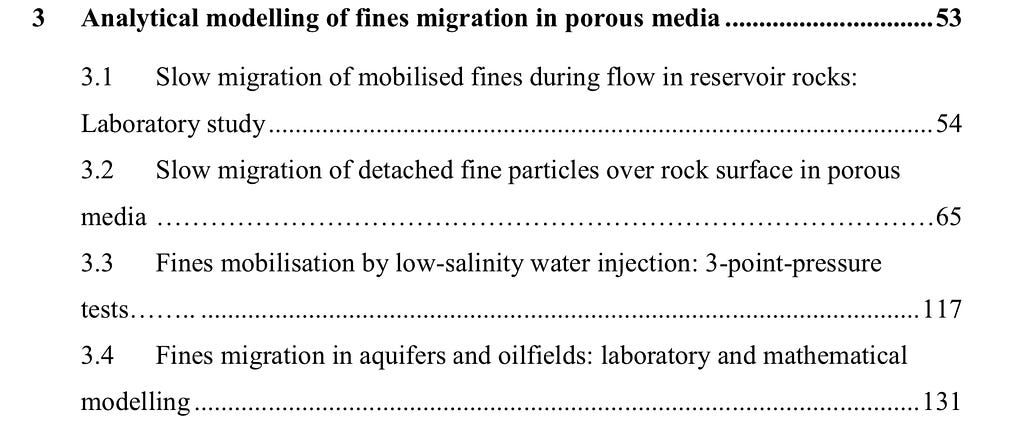
So to approach this level of output ratio, my experiment used a 300 to 1 ratio. I started with 5g of coffee in a 7g VST single basket. I used a spring and a shower screen to contain the coffee in the bottom portion of the portafilter. Then I ran a flat pressure profile through the puck using a Decent Espresso machine. I pushed through 1500g of water.
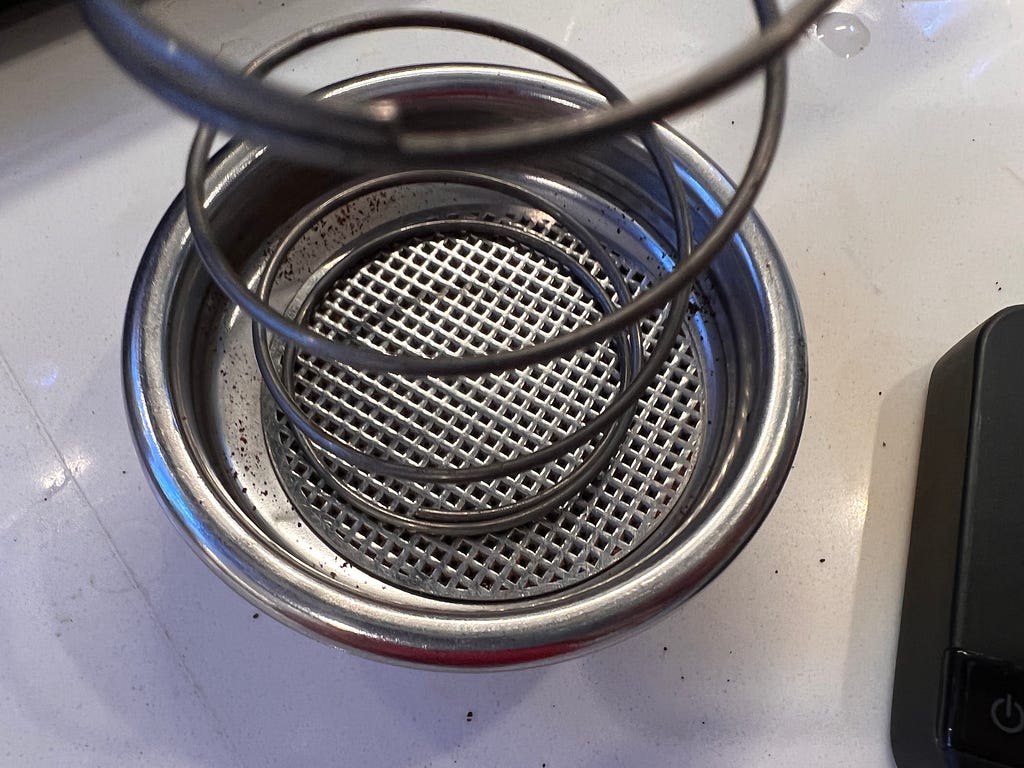
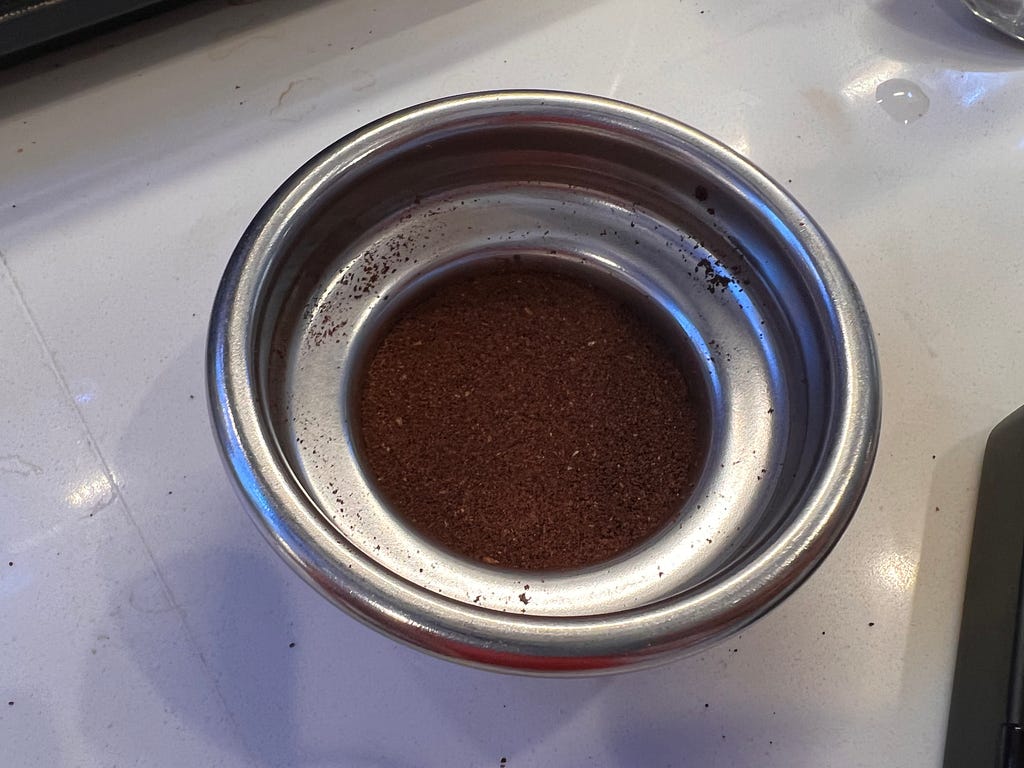
I also measured the TDS of the water, but it gave funny readings.
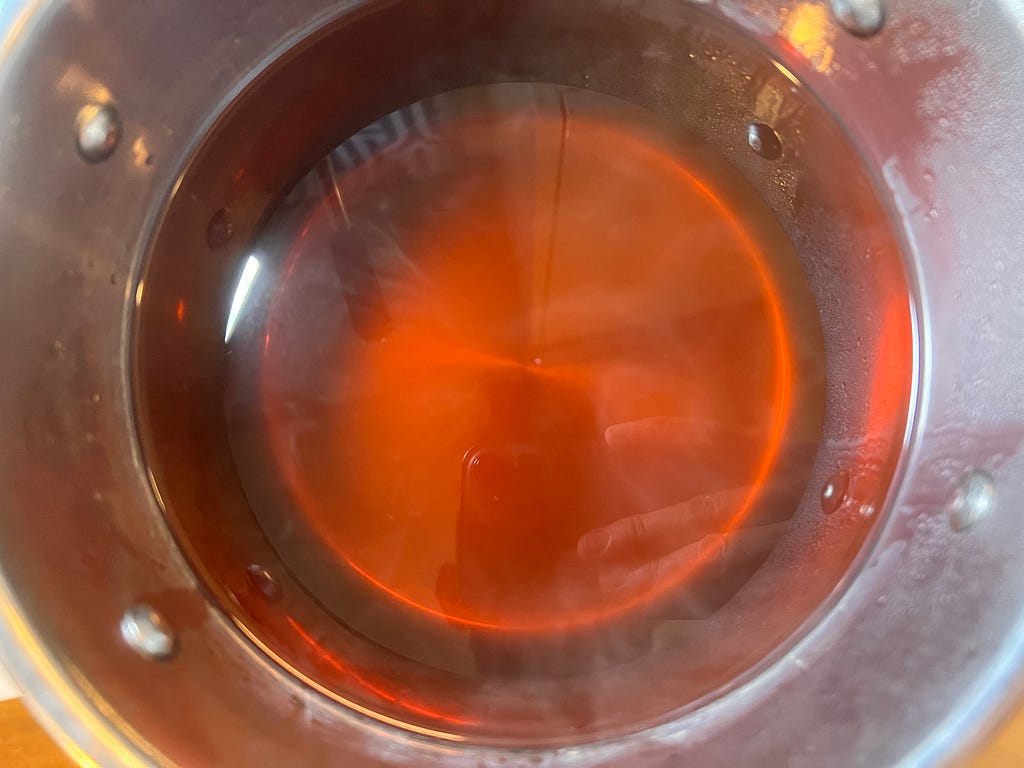
The calibration seemed a little off, but even if I had a 30% extraction yield, that would be 1.5g, and 1.5g divided by 1500g of water would be 0.1% TDS. So it is definitely in a range of difficulty to measure.
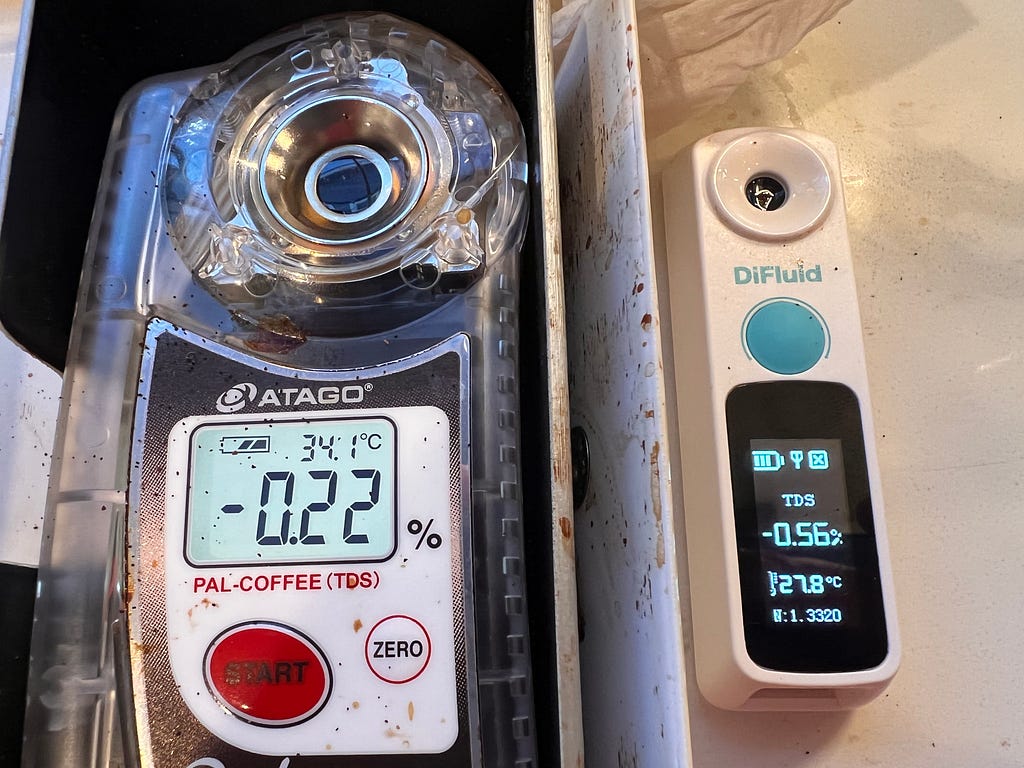
I looked at the top of the puck, and the top did look and feel coarser.
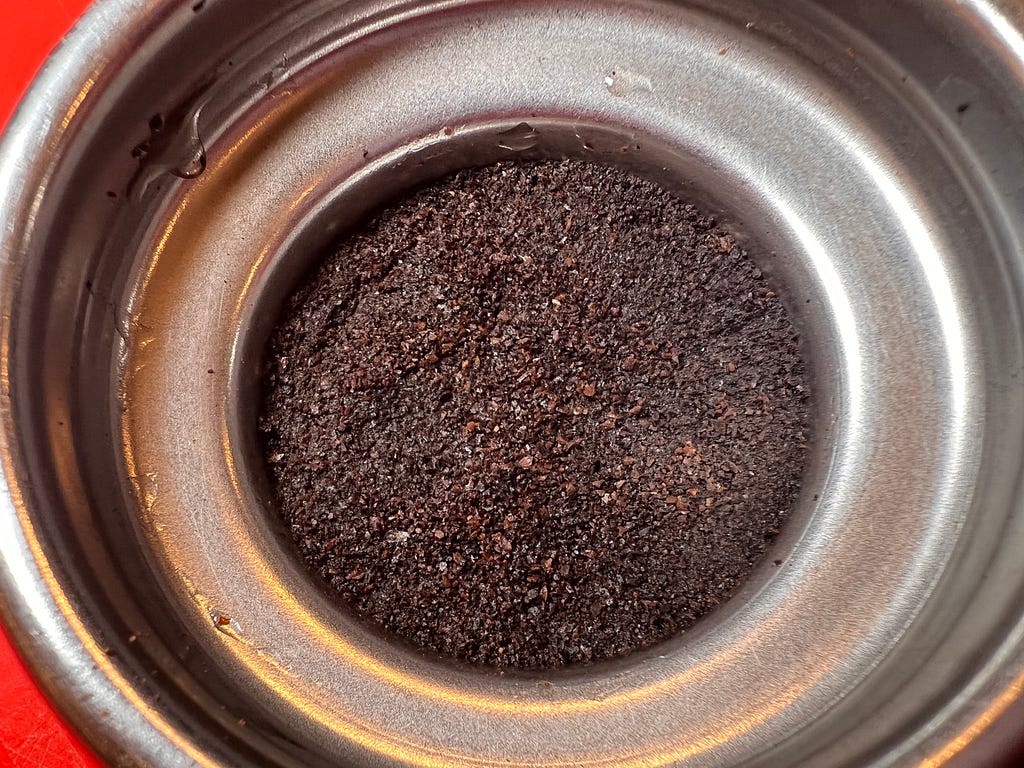
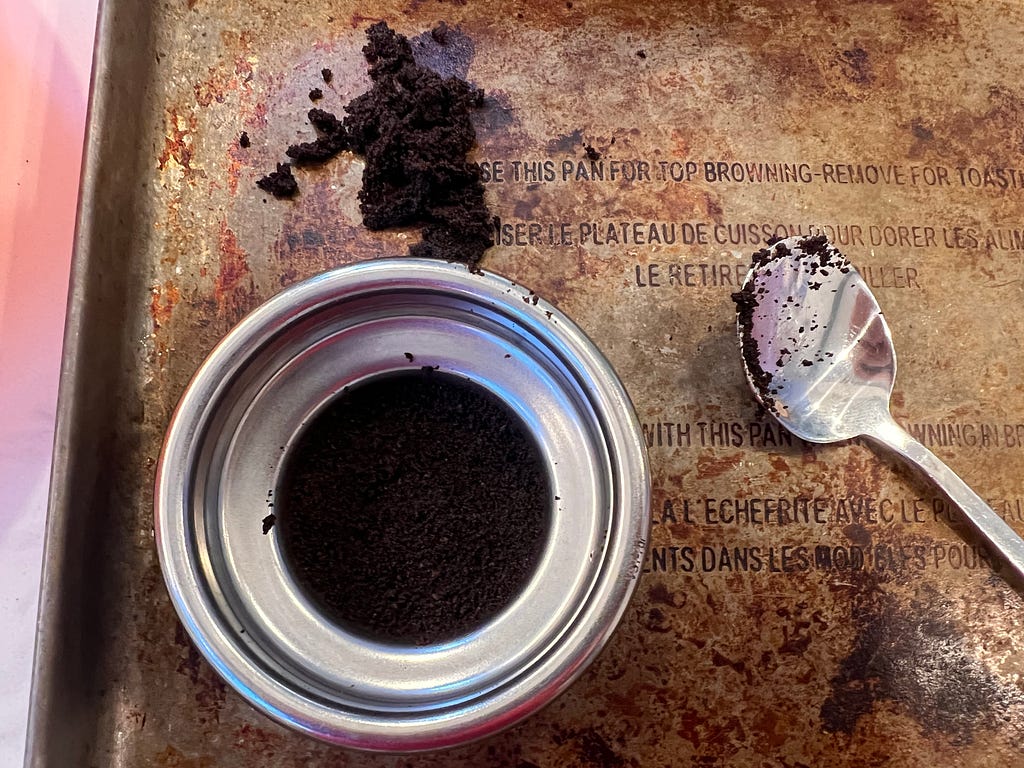
For the bottom of the puck, it was difficult to tell how fine the particles were.
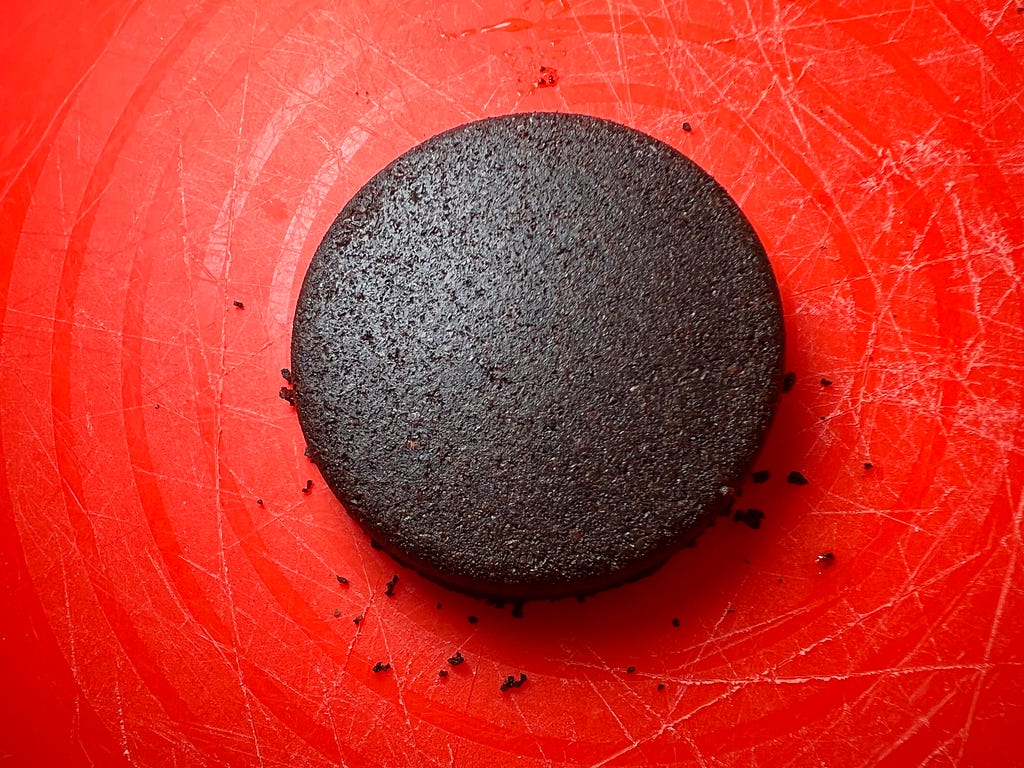
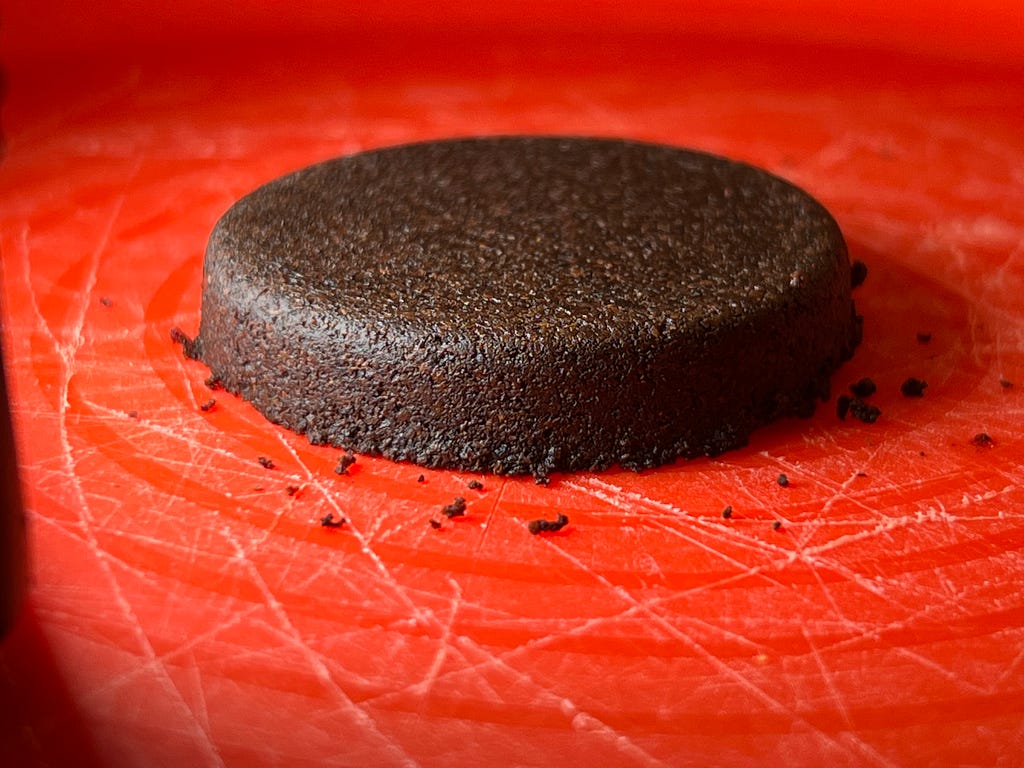
I scrapped off the top and bottom layers to separate them.
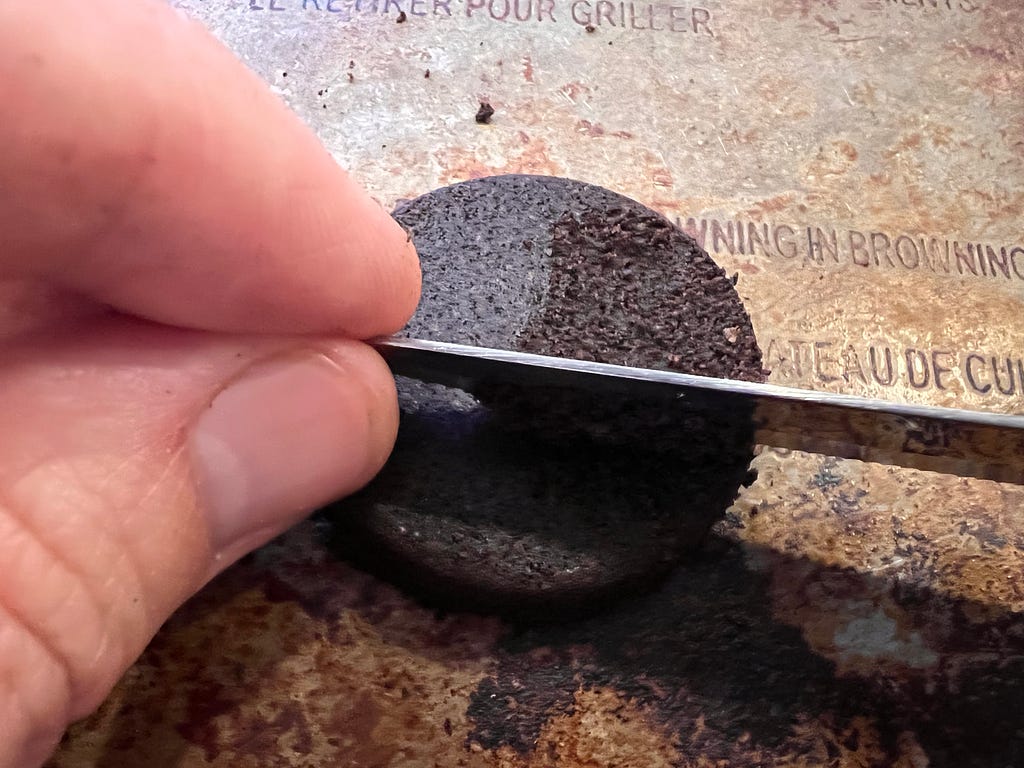
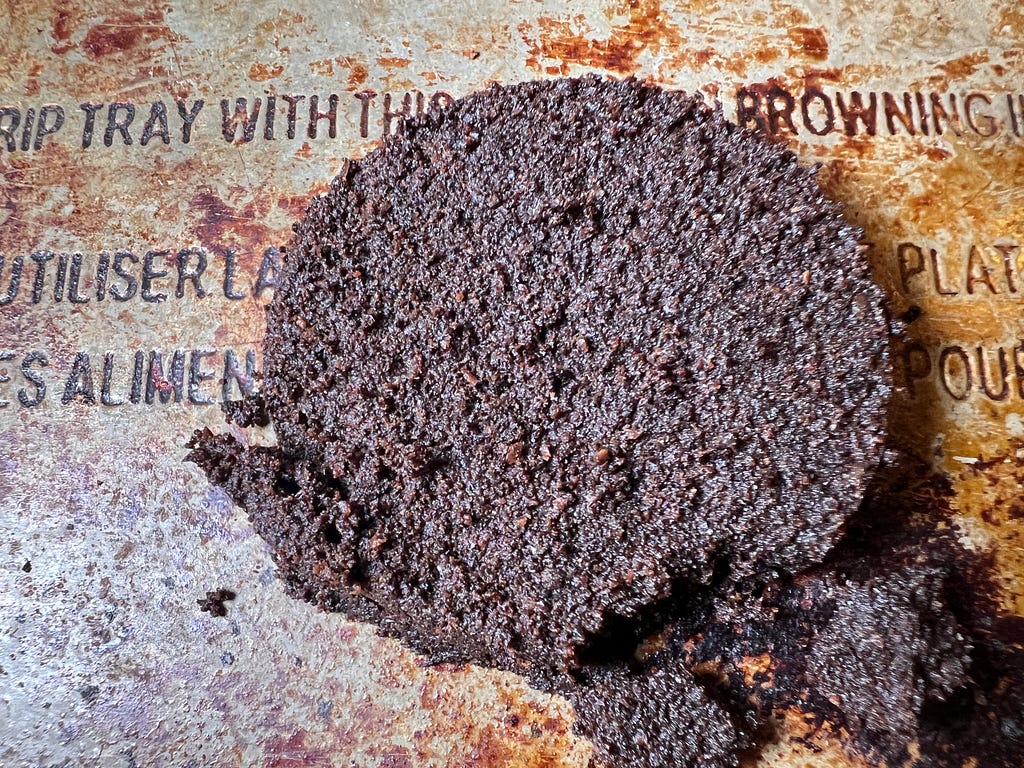
Additionally, I let any coffee grounds in the output liquid settle, and I pulled off the water to see how much coffee grounds migrated into the cup. It was less than 0.01g as expected from previous experiments.
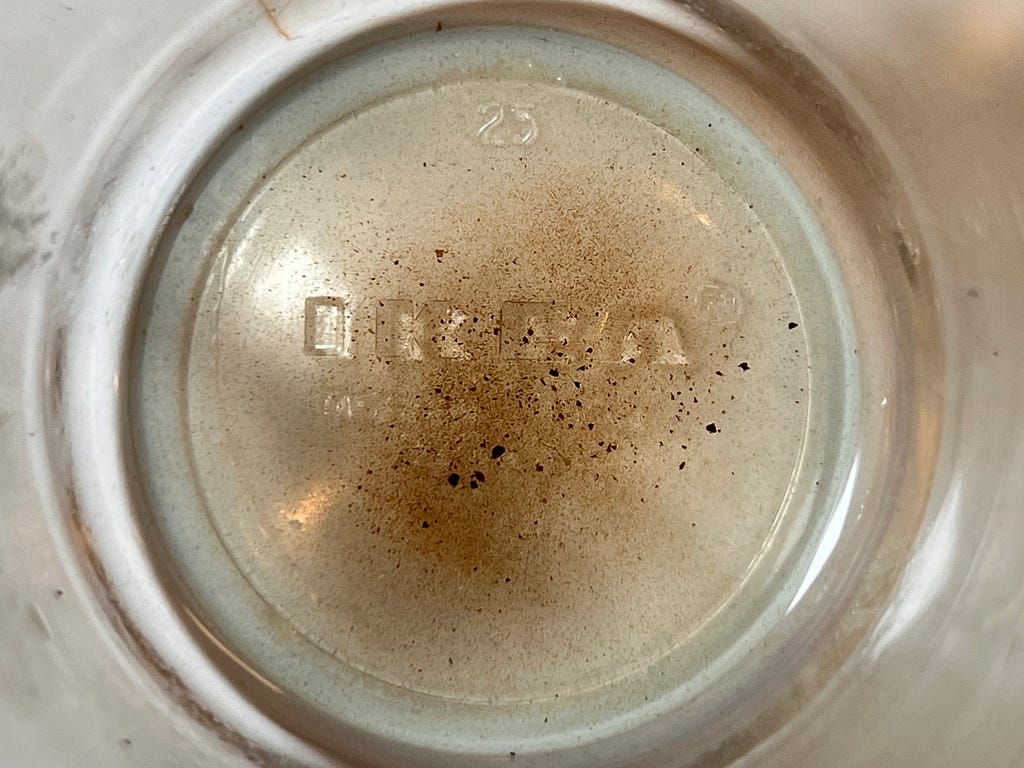
This experiment confirms that fines migration in coffee behaves similarly to fines migration in soil, which means that fines migration doesn’t start happening at a significant level until a very high output to input ratio. I have not seen convincing data that fines migration occurs significantly in a regular output ratio of 3:1.
If you have made it this far and are mad about the title being a click-bait, I apologize. It seems there are plenty of people who see the title of my articles, don’t read them, and then argue with me about the article contents. So I was aiming to reverse my typical article flow to help reinforce the concept of “Don’t judge a book by its cover.”
If you like, follow me on Twitter, YouTube, and Instagram where I post videos of espresso shots on different machines and espresso related stuff. You can also find me on LinkedIn. You can also follow me on Medium and Subscribe.
Further readings of mine:
Collection of Espresso Articles
A Collection of Work and School Stories
Yang, Y., et al. “Fines migration in aquifers and oilfields: laboratory and mathematical modelling.” Flow and Transport in Subsurface Environment. Springer, Singapore, 2018. 3–67.
Yang, Yulong. Analytical modelling of fines migration in porous media. Diss. 2016.
Fines Migrate in Espresso: Stronger Evidence was originally published in Towards Data Science on Medium, where people are continuing the conversation by highlighting and responding to this story.
from Towards Data Science - Medium https://ift.tt/IzFaHhm
via RiYo Analytics

ليست هناك تعليقات